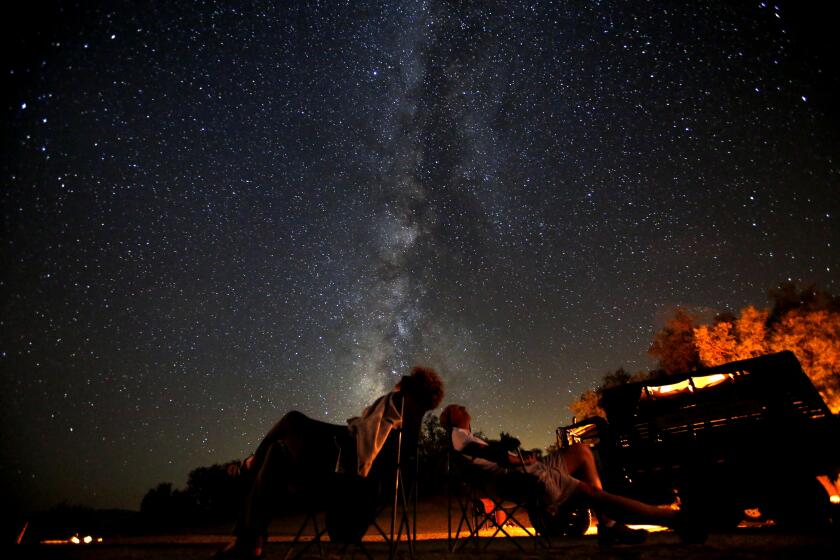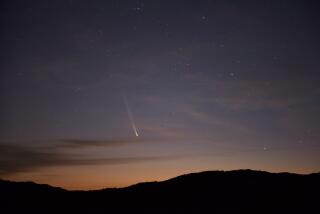Rare Draconid meteor shower to illuminate California’s evening sky this week

- Share via
Weather permitting, Californians may be in for a treat over the next few days as the Draconid meteor shower returns, producing stunning streaks of light in the night sky.
The meteor shower, which began Sunday and ends Thursday, will likely peak Monday night with higher chance of viewing them in North America on Tuesday night, according to the online journal Earth Sky.
The Draconid meteor shower happens every October as the Earth passes through a trail of ice and rock left by the comet 21P/Giacobini-Zinner, which travels around the sun every 6½ years, according to NASA.
Streaks of light, commonly referred to as shooting stars, appear in the night sky when a piece of dust or other debris encounters the Earth’s atmosphere and burns up.
The Draconid meteor shower gets its name from the northern constellation of Draco the Dragon, the direction the meteors appear to be coming from. They are also referred to as Giacobinids, in honor of Michel Giacobini, who discovered the comet in 1900.
Two meteor showers visible from the Northern Hemisphere, the Southern delta Aquariids and the alpha Capricornids, will peak between Monday and Wednesday.
What makes Draconids rare is that they are visible throughout the night, unlike other meteor showers that are primarily visible between midnight and predawn hours. They also move across the sky at a leisurely pace. The American Meteor Society considers the Draconids as variable meteor showers because they can produce little activity or, on rare occasions, illuminate the sky with hundreds of shooting stars.
In 2011 for instance, sky watchers around the world reported a peak of 660 meteors per hour, Earth Sky reported. The following year, there were 1,000 meteors per hour, according to Spaceweather, an online news site.
To view the Draconids, first drive away from the city’s light pollution, then look to the northern constellation of Draco. No binoculars are required, as meteors will be visible to the human eye, but don’t forget a blanket and a warm beverage.
More to Read
Sign up for Essential California
The most important California stories and recommendations in your inbox every morning.
You may occasionally receive promotional content from the Los Angeles Times.












